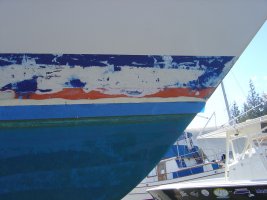Gary,
My impression is that published figures for displacement tend to be "light ship" figures...that is, unloaded. I put this question to Bruce Roberts, the guy who designs for amateur builders, regarding one of his designs I was looking at, and he confirmed that the published displacement was the unloaded boat. Some of Bob Perry's comments I've read suggest the same thing. And to give an idea of the potential difference between the two, the designed displacement of my boat is 15000-16000 lbs.; and yet, the actual weight (according to the yard in San Diego who hauled the boat for survey) was more like 21,000 lbs.! The difference between those figures is close to the weight of ballast for the boat, and so could generate confusion. Designers can't possibly predict the weight that will be piled on a boat by owners after it leaves the factory, so they necessarily use light ship figures, or half load figures based upon tank capacities and modest loading of stores...something that IS relatively predictable.
I'm unfamiliar with how "tonnage" is calculated, but "displacement" simply means the weight of the water pushed out of the way by the boat...and therefore, the exact weight of the boat itself. And this weight MUST include the weight of the ballast, for the same reason it includes the weight of everything from the rig to the bottom paint. I am unfamiliar with the term "Total Displacement", but it seems more likely to describe the difference between a loaded and unloaded boat than the difference between a boat with or without ballast.
Dan Morehouse
1981 E-38 "Next Exit"


